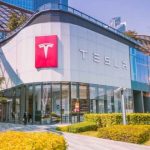Tesla lays off more staff in software and engineering amid slow sales and price war

Tesla has laid off more staff across its software, service, and engineering divisions, according to a report from tech publication Electrek, citing people familiar with the matter. The move follows the recent dissolution of its EV charging sector, part of Tesla’s broader initiative to downsize its global workforce by over 10%.
The news comes less than a week after Tesla fired 500 workers from its Supercharger division, raising concerns about the company’s charging strategy amidst calls for further expansion from EV enthusiasts.
Insider sources told Electrek that employees were notified via email over the weekend as part of these sweeping layoffs. Despite requests for comment from media outlets, Tesla, whose stock saw a modest increase of over 1%, has not yet responded.
“Several sources familiar with the matter told Electrek that workers across several departments, including software, service, and engineering, have received the dreaded “employment status” email between Friday and Sunday,” Electrek reported.
Last month, the company disclosed its plans to lay off more than 6,700 employees across various locations including Texas, California, Nevada, and New York. Tesla faces challenges stemming from declining sales and heightened competition in the electric vehicle market, exacerbated by rising interest rates impacting consumer adoption.
In response, Tesla appears to be prioritizing investment in autonomous driving software, robotaxis, and its humanoid robot, Optimus. Analysts speculate that Elon Musk, Tesla’s CEO, may be reallocating resources from certain departments to bolster funding for these strategic ventures.
According to another report from Reuters, the anticipated costs of these layoffs are substantial, with Tesla estimating expenditures exceeding $350 million in the second quarter alone. Notably, the restructuring has also seen the departure of key executives such as Drew Baglino, Rohan Patel, Rebecca Tinucci, and Daniel Ho.
In April, Tesla announced plans to introduce “new models” utilizing existing platforms and production lines, a decision aimed at optimizing capital expenditure management.
As Tesla navigates these internal shifts, the broader implications for its charging infrastructure and market positioning remain uncertain, leaving stakeholders and enthusiasts alike on edge.

